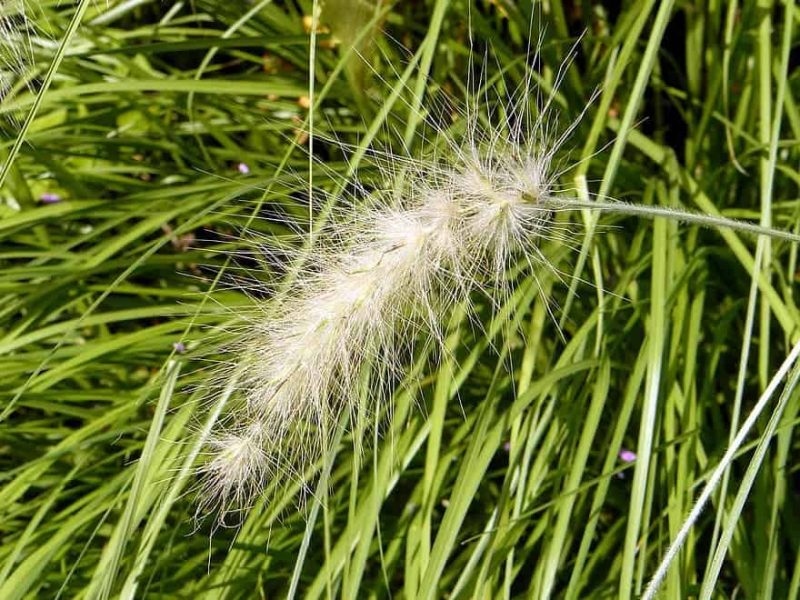You can quickly grasp how to remove ornamental grasses in two steps. First, identify the type of grass you have and then decide whether to dig it up or use a herbicide. While gardeners often plant decorative grasses for aesthetic purposes, they tend to thrive and spread so quickly that you will need to remove some of them.
The good news is you don’t need to hire others to do this job. Understanding and planning these grasses will also help you in the future. For example, you can choose clump-forming grasses next time because they are not as invasive as rhizome-forming grasses.

How To Remove Ornamental Grasses Easily
Step #1. Identify the grass
Before the removal itself, you must know the type of ornamental grass that you have. This will give you the information on their growth habit to create a better plan for removal. For example, invasive species might require special care in removal and involves consultation with the extension in your area before eradicating them.
Clump-forming vs rhizome-forming
As mentioned earlier, you can classify grasses into clump-forming and rhizome-forming types. It’s preferable to have clump-forming because they don’t have an invasive habit. Instead, they grow neatly in clumps, as the name implies.
On the other hand, rhizome-forming grasses do not form clumps but spread via underground stems. There are still some popular ornamental rhizome-forming grasses, but careful planning for their location is necessary so that they won’t take over your other plants.
Warm-season vs cool-season
Another way to classify grasses is via their growing season. Warm-season ornamental grasses grow in spring and summer and undergo dormancy in the winter. On the contrary, cool-season grasses will thrive in fall or winter.
Knowing when the grasses begin new growth, bloom, or go dormant would be useful in removing them. Additionally, this also helps with planning the next time you’re planting grasses. In the greenhouse, you can use the structure to your advantage and adjust the conditions to grow grasses.
Option #1. Digging
Now that you identified your grass’s type and habits, you have two options for removing them. The first one is digging up the ornamental grass, and most gardeners prefer this method because it doesn’t require chemicals. You only have to understand how the root system of these plants works.
Unlike other plants, digging up ornamental grasses is better if you do it in groups or start in small locations first. The intricate and deep root systems of ornamental grasses make it likely for errors on the gardeners part because you can leave some root parts that will grow later. Digging up grasses at a time will ensure that you have eradicated the root system.
The process of digging up grasses is straightforward. Use a shovel to do so while making sure you’re not leaving any part of the root system. For your convenience and a cleaner set-up, place all the grassses you removed in the wheelbarrow, and don’t forget to check your laws for proper disposal.
You’ll also have an easier time digging them up if you cut the grasses down to 2 inches above the ground and section them into divisions using a sharp shovel. More so, it’s always useful to water the roots and soil for easier digging up.
Digging out the center of ornamental grasses
For maintenance, you might find the center of your grasses starting to thin out and die. You don’t necessarily have to dig out the whole clump, but you will need to remove the center and divide the clump into sections. Remember that warm-season and cool-season grasses will differ in this maintenance time, so divide the former in late winter and the latter early in fall.
Start by watering the soil a day before you divide your ornamental grasses and prepare the new location or container for the clumps you’ll get. Then, cut the grasses back within 8 inches of ground level and sever the roots with a sharp spade. A useful tip is to cut a circle more extensive than the clump because it makes it easier to lift the clump out, and you can use a knife to cut the remaining roots.
Option #2. Herbicides
If digging up proves to be ineffective and too much of a hassle, you can consider using herbicides to remove ornamental grasses. However, as with any chemicals, be careful with using herbicides if the grasses are close to other plants. If you want, you can also use pre-emergent herbicides to prevent grasses’ growth instead of directly using glyphosate sprays.
How to use herbicides for ornamental grasses?
What type of herbicide should you use? Either liquid and granular herbicides will be useful and safe as long as you read the instructions and wear the appropriate safety gear. Remember to be wary of windy and warm days, and use greenhouse-safe products if you’re indoors.
Cut down the grasses to be only around four inches tall for more straightforward applications. Check your spray as coarse droplets are better to prevent damaging other nearby plants, and remember that dilution might be necessary for some products. Lastly, guarantee that the day after application will be cool to avoid the evaporation of herbicides.
Conclusion
If you’re growing decorative grasses, it’s ideal to know techniques in maintenance. More so, learning how to remove ornamental grasses will keep them looking neat and not bothering nearby plants. Start first by identifying your grass’s type and habit, then gauge if you need to dig up the grasses or use a herbicide.
